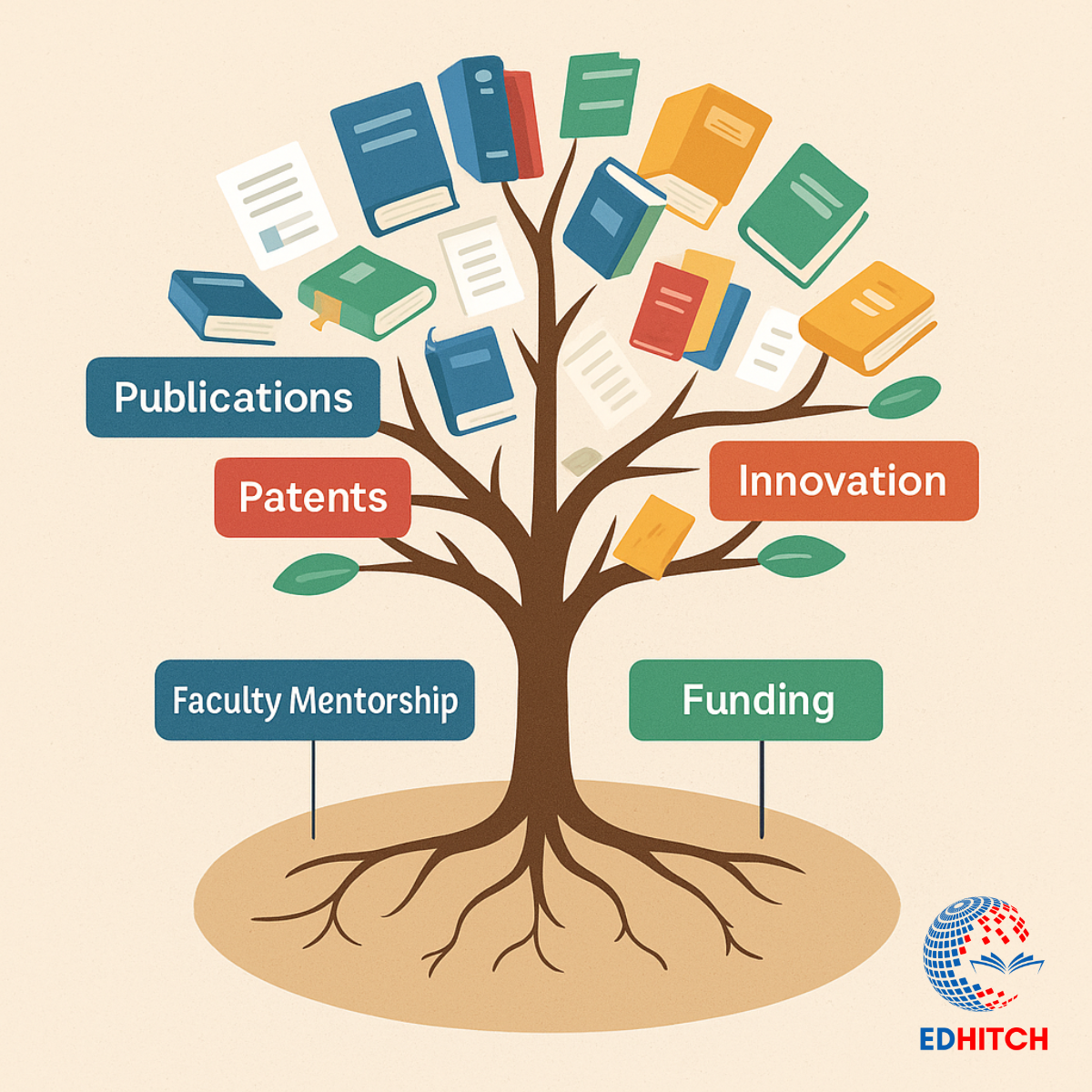In the traditional academic ecosystem, publishing research papers has long been the gold standard for recognition and advancement. While publications remain important, higher education institutions today are under increasing pressure to demonstrate tangible impact—not just through journal metrics, but through funding, consultancy, patents, and contributions to industry and society.
Frameworks like NAAC (National Assessment and Accreditation Council), NBA (National Board of Accreditation), and NIRF (National Institutional Ranking Framework) emphasize research not as an end in itself but as a driver of institutional excellence, employability, and national growth. This calls for a paradigm shift: moving beyond papers into impact-driven research ecosystems.
Research in higher education is no longer about filling libraries with papers—it’s about filling society with solutions. Institutions that move beyond the publishing race and focus on grants, consultancy, and industry partnerships will not only climb the NAAC/NBA/NIRF ladder but also earn credibility as engines of national progress.
How does NAAC evaluate research beyond publications?
NAAC focuses on the impact of research—such as grants received, consultancy projects, patents, and industry collaborations. It looks at whether faculty research addresses societal needs and contributes to institutional growth, not just paper counts.
How is research considered in NBA accreditation?
NBA emphasizes Outcome-Based Education (OBE). Research outcomes are mapped to Program Outcomes (POs) and Program Specific Outcomes (PSOs). Faculty and student projects, patents, and industry consultancy show real-world application of learning.
How can research improve NIRF rankings?
NIRF’s Research & Professional Practice (RP) parameter directly rewards publications, IPR, and projects funded by government or industry. Grants, consultancy revenue, and patents can significantly boost RP scores, improving overall ranking.
What are the benefits of converting research into consultancy?
Consultancy projects connect faculty with industry challenges. This generates revenue for the institution, enhances faculty expertise, provides students with industry exposure, and creates evidence for NAAC/NBA/NIRF benchmarks.
Why are patents and startups important for higher education institutions?
Patents and startups demonstrate innovation and commercialization of knowledge. They build institutional credibility, attract funding, and improve student employability. For accreditation and rankings, they serve as strong evidence of impact.
How can faculty secure research grants more effectively?
Faculty should identify problem statements rooted in societal or industry needs, collaborate across disciplines, attend grant-writing workshops, and align proposals with national priorities and institutional vision.
How can institutions track and showcase research outcomes?
Institutions can use evidence banks to store research outputs, AI-powered dashboards for mapping publications, grants, and consultancy to accreditation criteria, and Annual Research Reports highlighting patents, startups, and collaborations.

